What is Eggplant Tempura?
Eggplant tempura (ナスの天ぷら) is a simple dish that involves deep frying eggplant in a thin Japanese tempura batter.
Eggplant is a popular ingredient used to make tempura due to its beautiful deep purple skin and tender flesh that can be cut and presented in various ways.
In this recipe, I will teach you three of the most common ways to serve eggplant tempura in Japan and how to achieve the perfect presentation and texture.
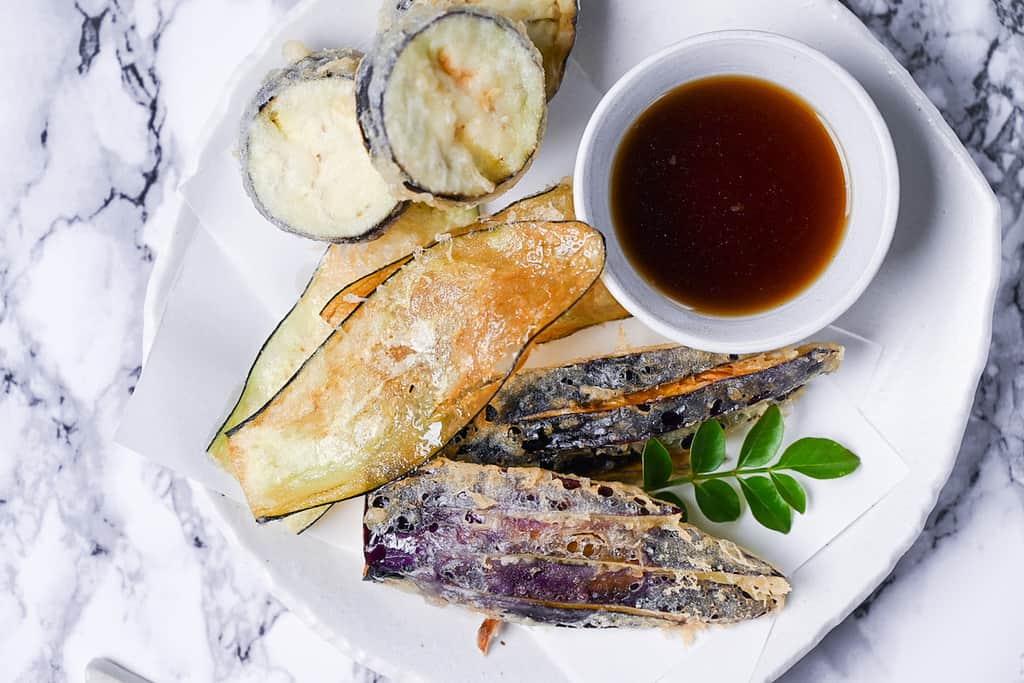
Types of Eggplants You Can Use
Eggplants, known as “nasu” (ナス) in Japanese, come in different sizes, colors, textures, and flavors. Some are big and slightly bitter, while others are small and slightly sweet.
Over ten different types of eggplants are available worldwide, and the variety you get depends on your location.
For making tempura, I suggest using one of the following types of eggplants:
- Japanese eggplant
- Chinese eggplant
- Italian eggplant
These three types are comparatively smaller and sweeter than the commonly used “globe eggplant” (also known as “American eggplant”).
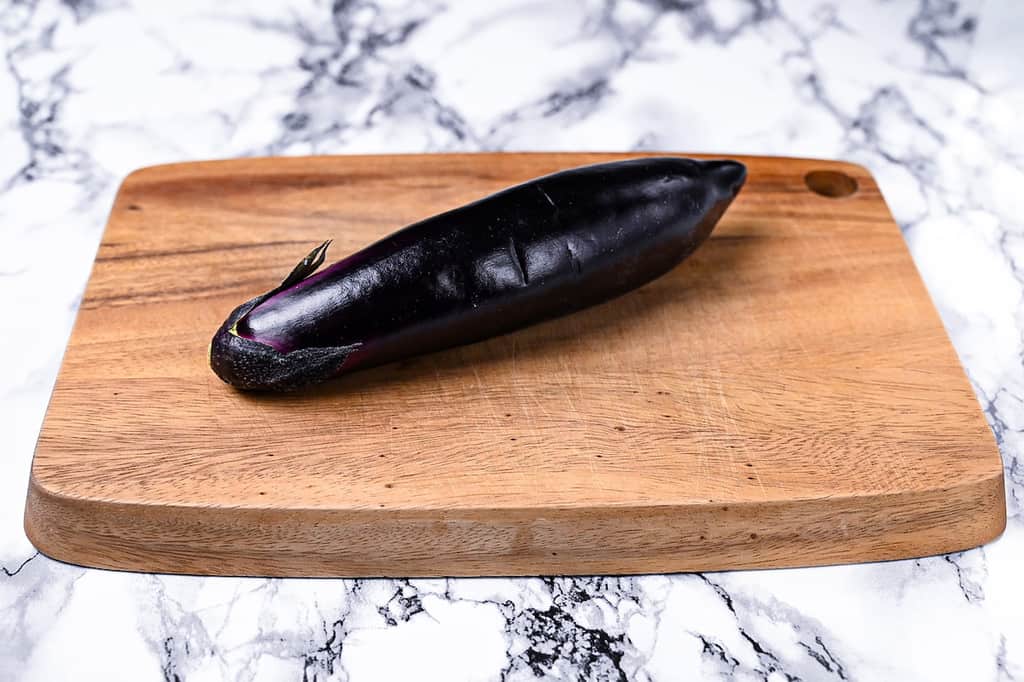
I used one of the Japanese eggplant varieties in my recipe: long, thin, pointed, and deep purple.
3 Ways to Cut Eggplant for Tempura
Different people use different techniques to cut eggplant for tempura based on their preference for the appearance, texture, and ease of preparation.
Here, I’ll list three different ways to cut eggplant for tempura so you can choose the one you like best!
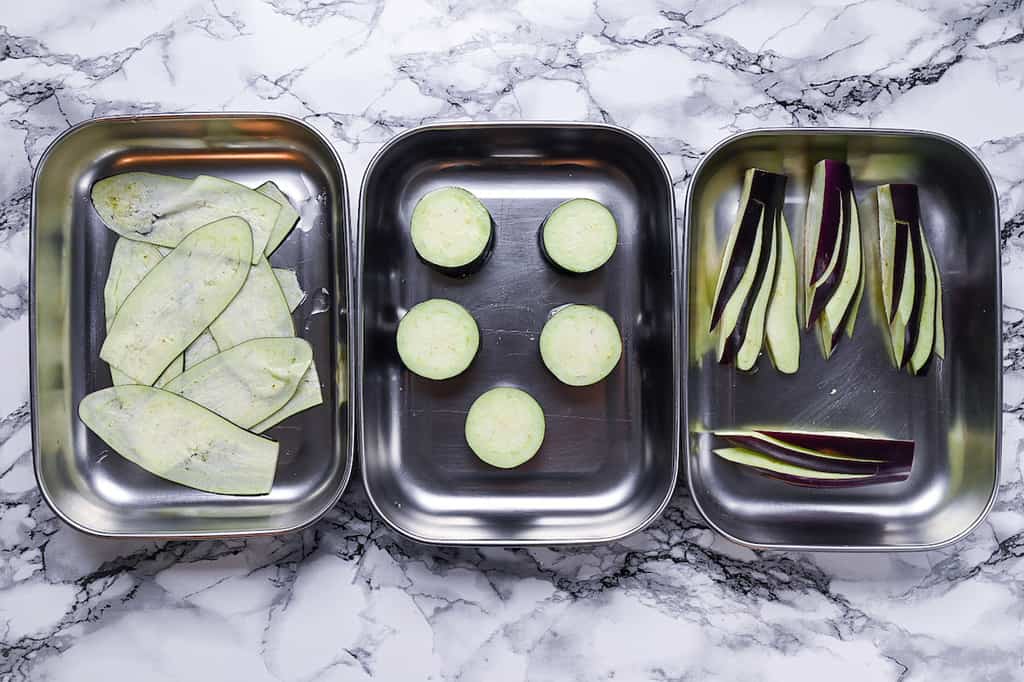
Suehiro/Oogi
Suehiro is a cutting technique where an ingredient is sliced thinly while keeping the end intact and then spread out to create a fan shape, known as the Japanese “ogi” (扇).
This shape is considered lucky and is commonly used for cutting bamboo shoots. The fan-shaped slices are perfect for many dishes, including tempura and simmered dishes, and are often served at high-end tempura restaurants.
To achieve the suehiro cut, I recommend using small eggplants. Not only does it look beautiful, but it also ensures that the oil’s heat is evenly distributed across each slice, resulting in a delicious texture.
It is an excellent option for entertaining or celebrations due to its gorgeous presentation.
Cut the top of the eggplant to remove the stem.
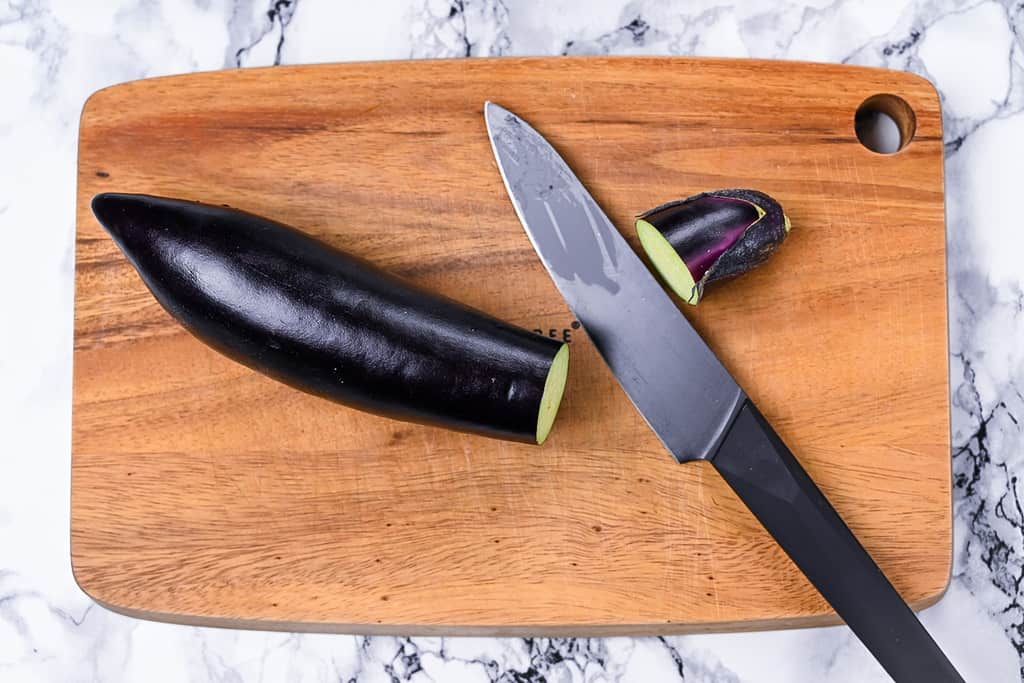
Cut the eggplant lengthways down the middle.
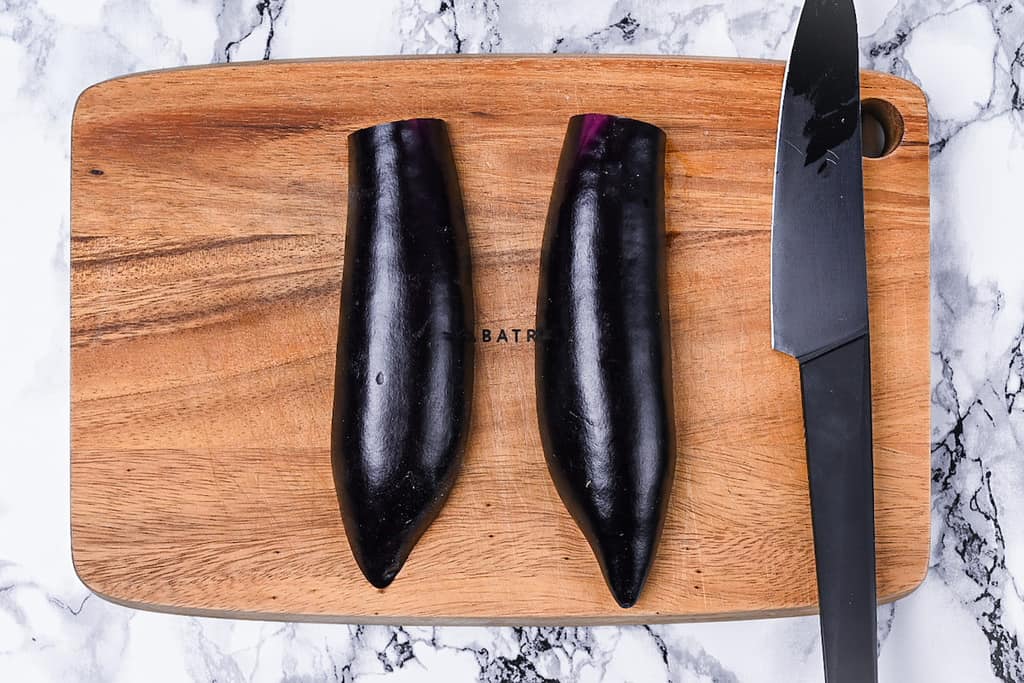
If your eggplant is long, cut it in half horizontally. If your eggplant is particularly small, you can skip this step.
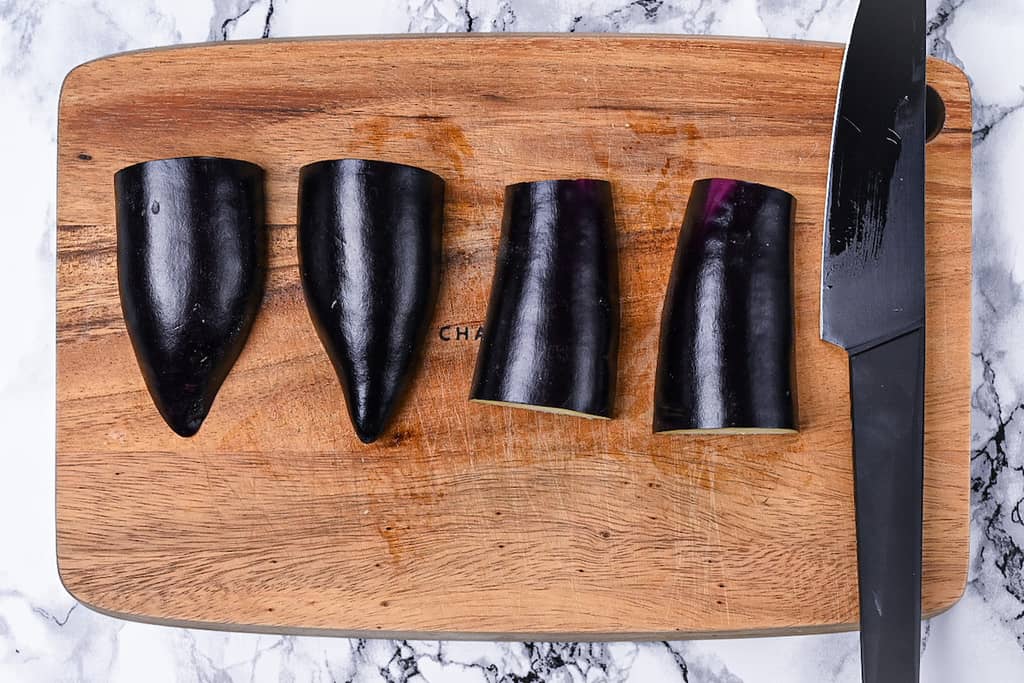
If your eggplant is quite thick, you can half it lengthways one more time. This is optional and depends on how wide you want the fan to be.
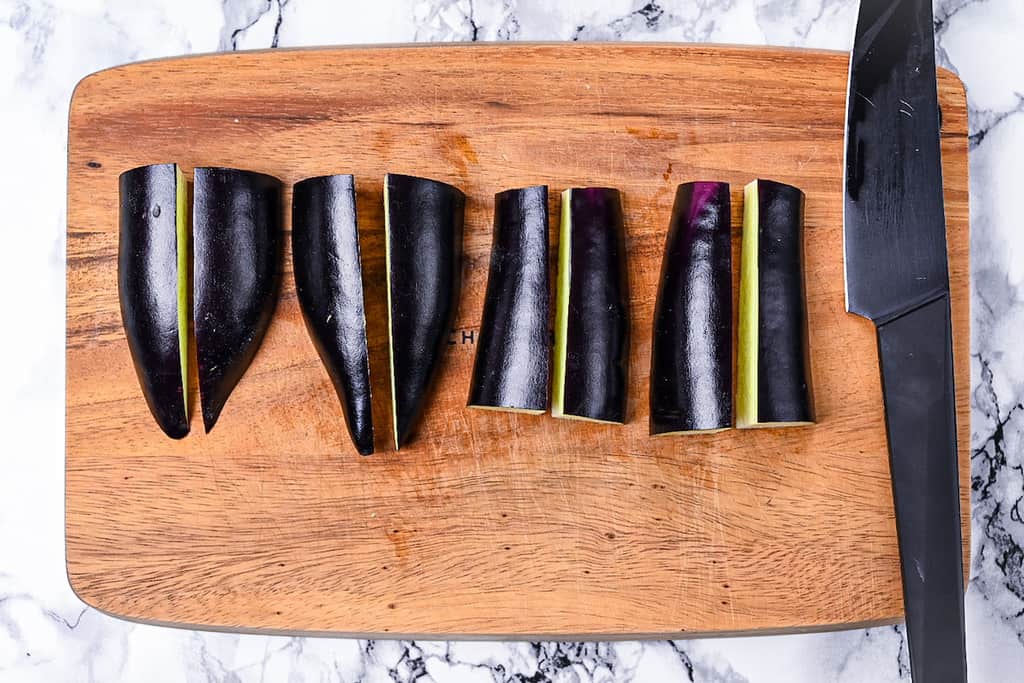
Leaving about 1cm (1/2 inch) at the top, cut slices 5mm apart. (Approx 1/4 inch)
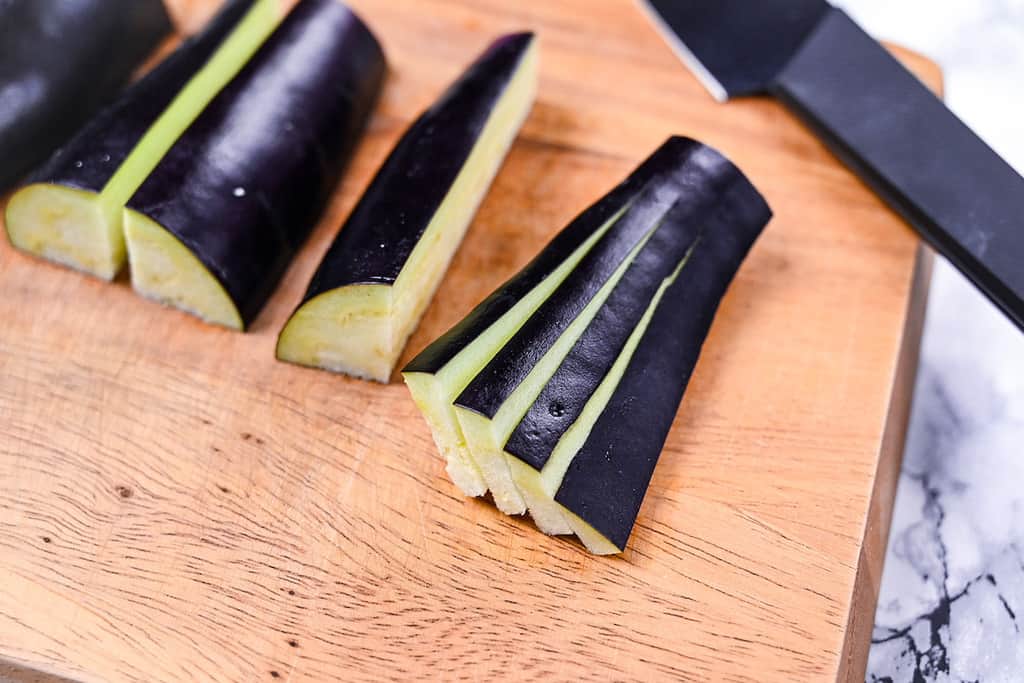
Gently spread the slices apart to make a fan shape.
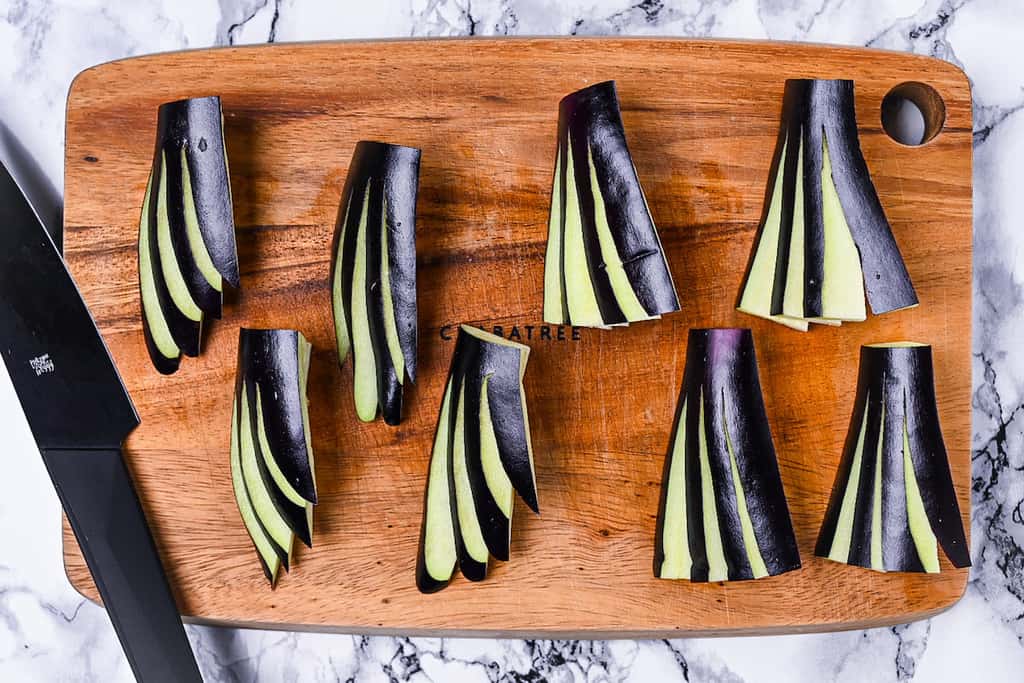
Thick Rounds
This is the easiest way to cut eggplant. Cut an eggplant into round slices 2-3 cm thick (approx 1 inch). By cutting the rounds quite thick, you can really enjoy the tender meat of the eggplant.
I also recommend it because it’s quick and easy to do; you can’t go wrong with this one!
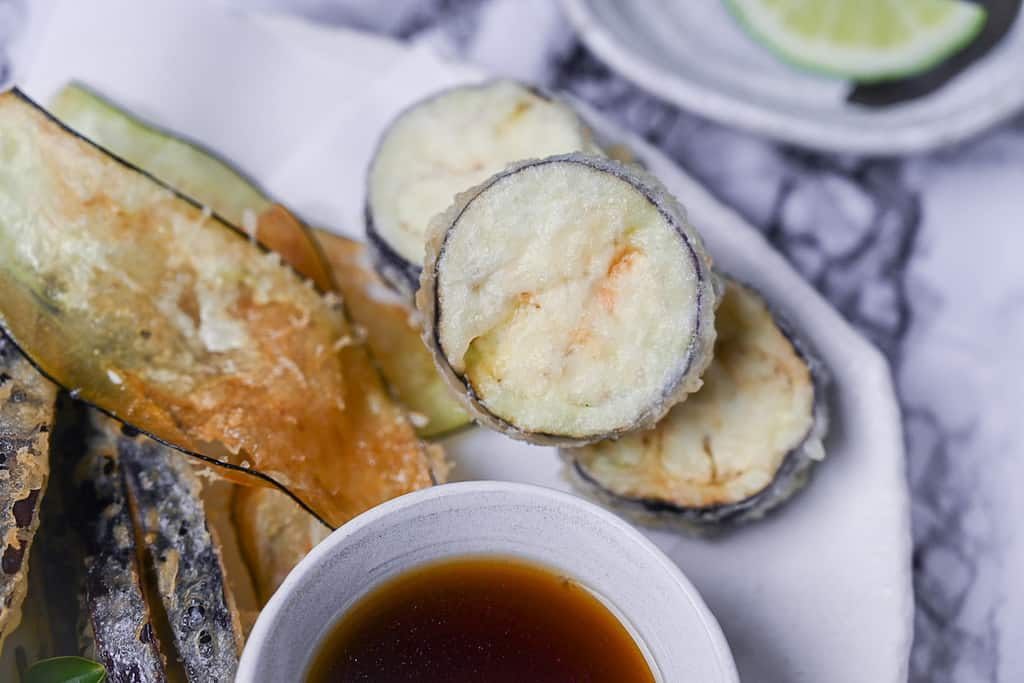
Thin Slice Using a Peeler or Mandoline Slicer
This is another easy way to make eggplant tempura with a bit of a different take.
By using a mandoline slicer or peeler, you can cut the eggplant extra thin. Not only does it cut down the cooking time, it also becomes like a potato chip and looks like a stylish street food snack!
You can purchase hand-held adjustable-width mandoline slicers on Amazon.
If you would like to add a bit of a snacky element to your eggplant tempura, I recommend this one! This one is especially good with a generous pinch of salt!
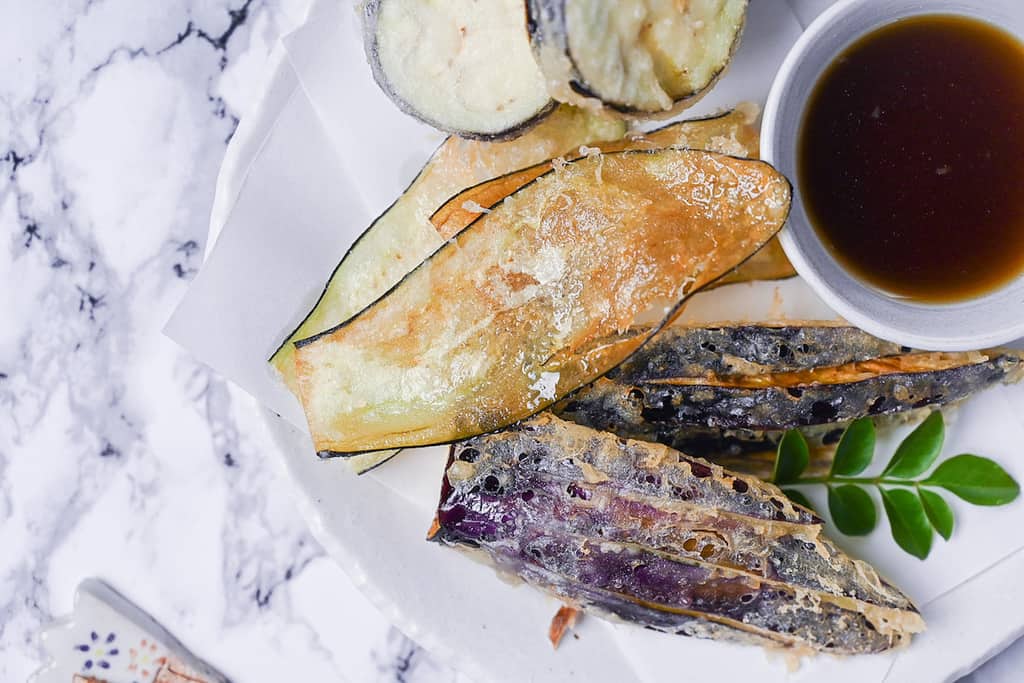
Visual Walkthrough & Tips
Here are my step-by-step instructions for how to make Eggplant Tempura at home. For ingredient quantities and simplified instructions, scroll down for the Printable Recipe Card below.
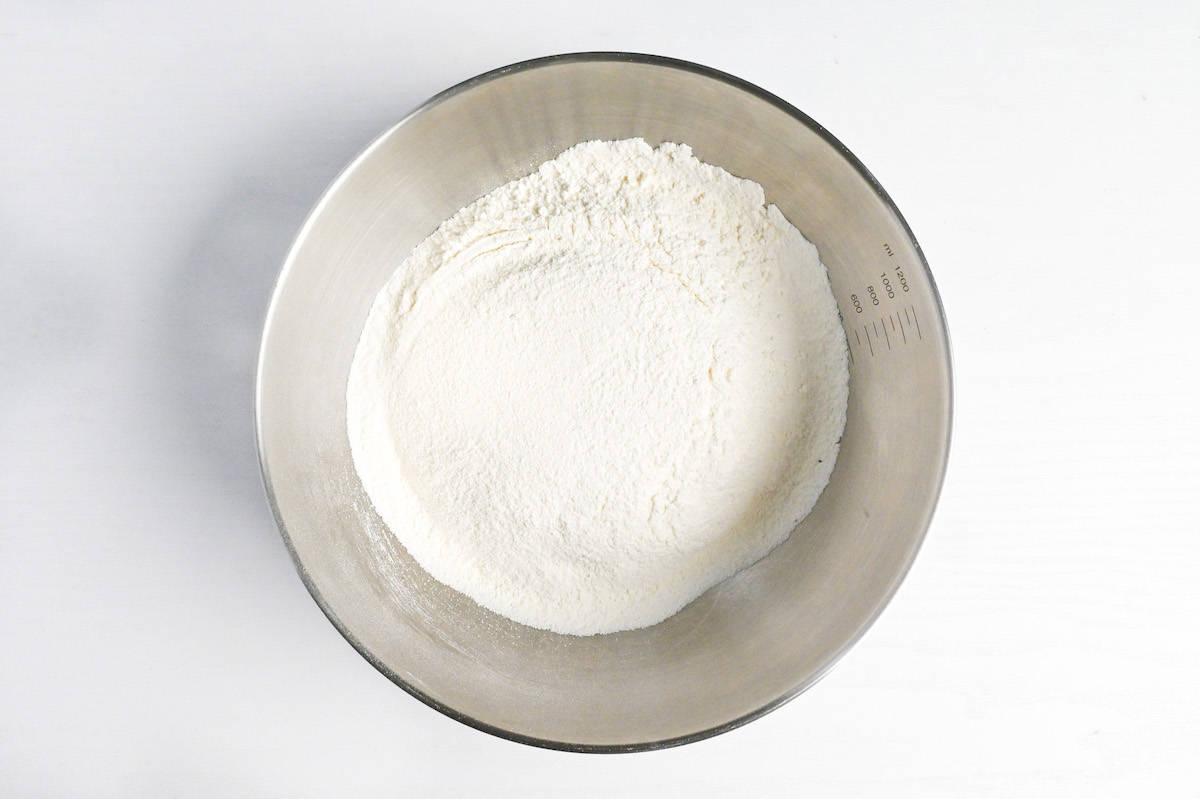
Begin by sifting the cornstarch and cake flour into a mixing bowl. Thoroughly combine the two ingredients, then place the bowl in the freezer.
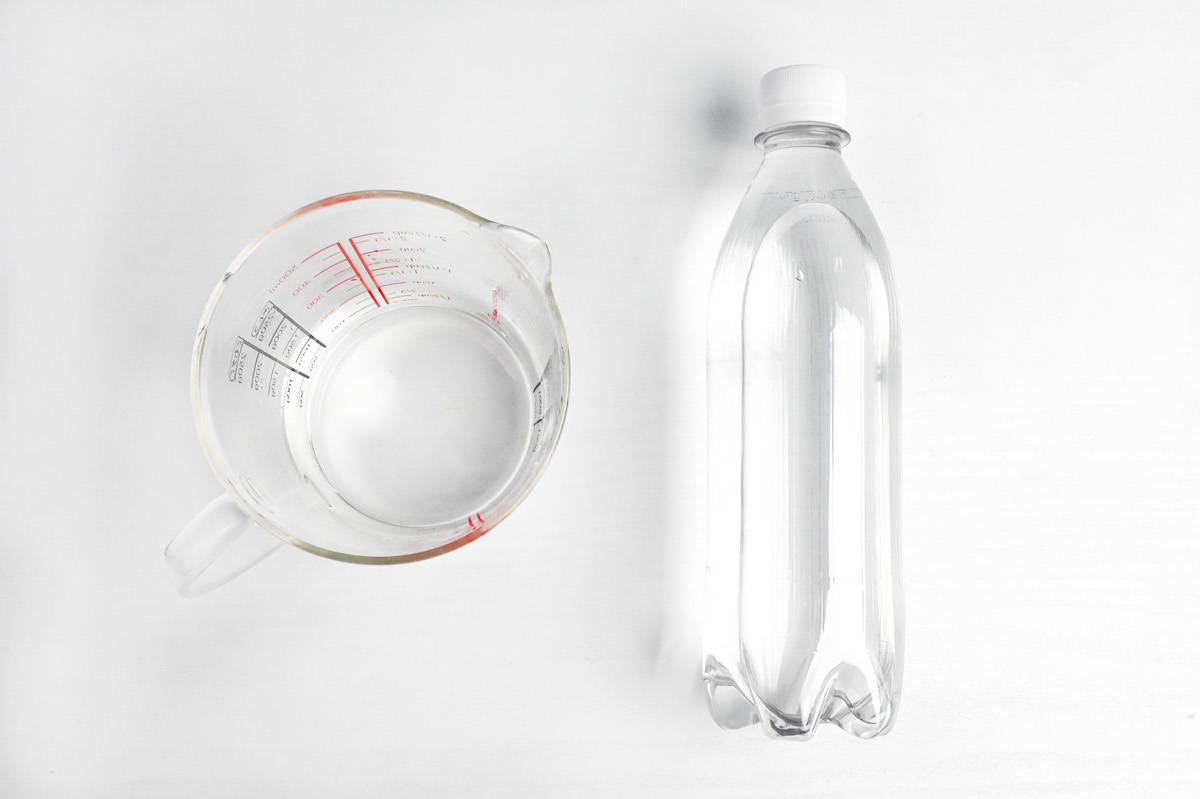
To create a delicious tempura batter, it is essential to use cold ingredients. To accomplish this, pour water into a jug and place it in the fridge along with an unopened bottle of sparkling water.
This simple step will make a significant difference in the outcome of your dish.
Before we start preparing the batter, let’s focus on the eggplant. Slice the eggplant per your preference using any of the methods explained above.
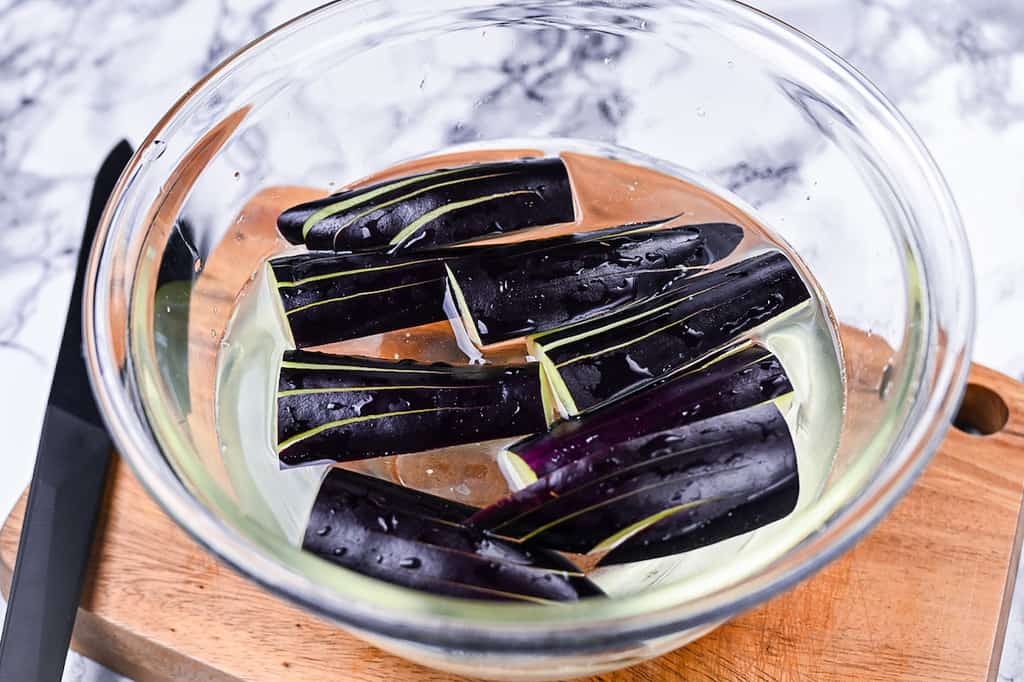
If you’re using the suehiro or thick round cuts, I recommend soaking the eggplant in a bowl of cold water with a pinch of salt for 5-10 minutes.
This will help draw out any bitter flavors and prevent the eggplant from soaking up too much oil while frying.
On the other hand, if you’re slicing the eggplant thinly with a mandoline, sprinkle the slices lightly with salt to release excess water from the eggplant.
After slicing the eggplant, dab them dry with kitchen paper. It’s important to remove all the water, as any moisture left will react with the oil and cause splashing.
It’s time to prepare the batter after 30 minutes. To make the batter, you can mix a few tablespoons of chilled water and ½ tbsp of Japanese mayonnaise in a bowl.
This is a great alternative to using a small amount of egg, which can be tough to measure precisely.
If you prefer, you can use egg instead, but remember that the general usage ratio for mayonnaise is 1 egg = 1 tbsp mayonnaise. So, make sure to use mayonnaise that contains eggs.
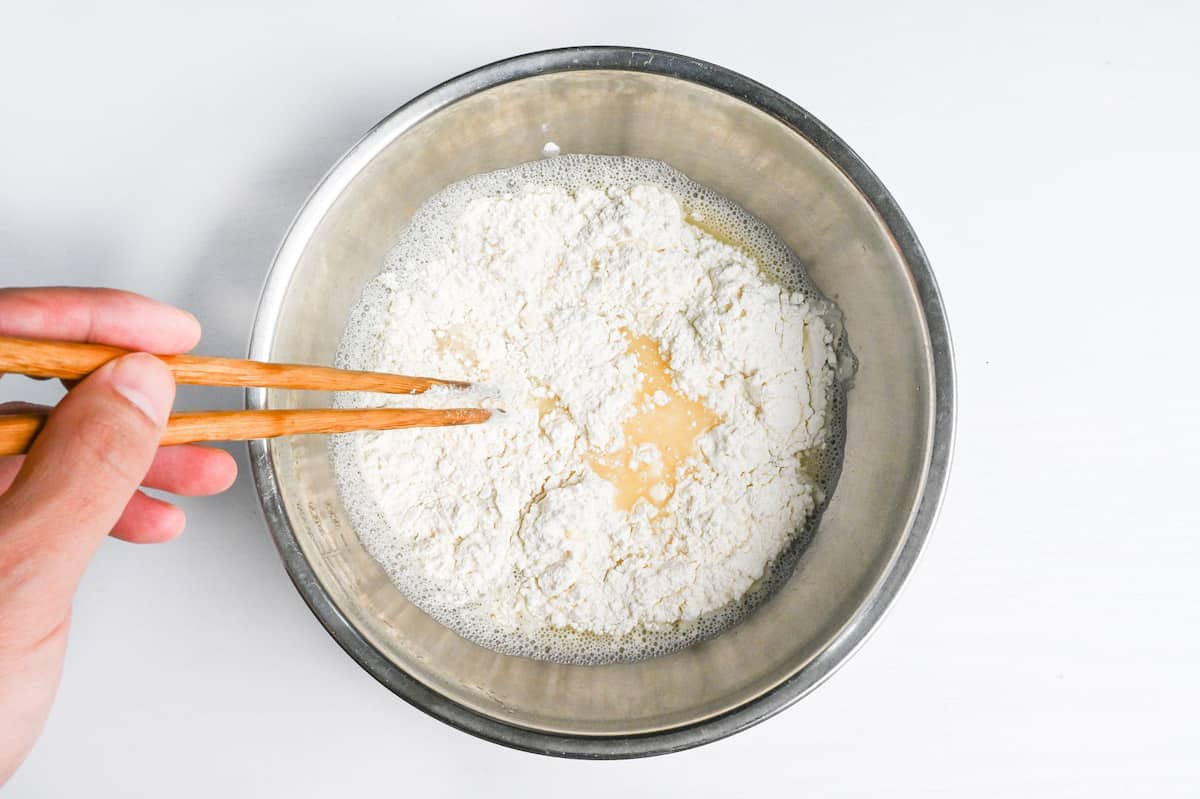
Next, add the flour/starch mixture to the bowl in thirds and use chopsticks to mix the ingredients together gently. Be careful not to overmix the batter, it’s perfectly fine if it still has lumps.
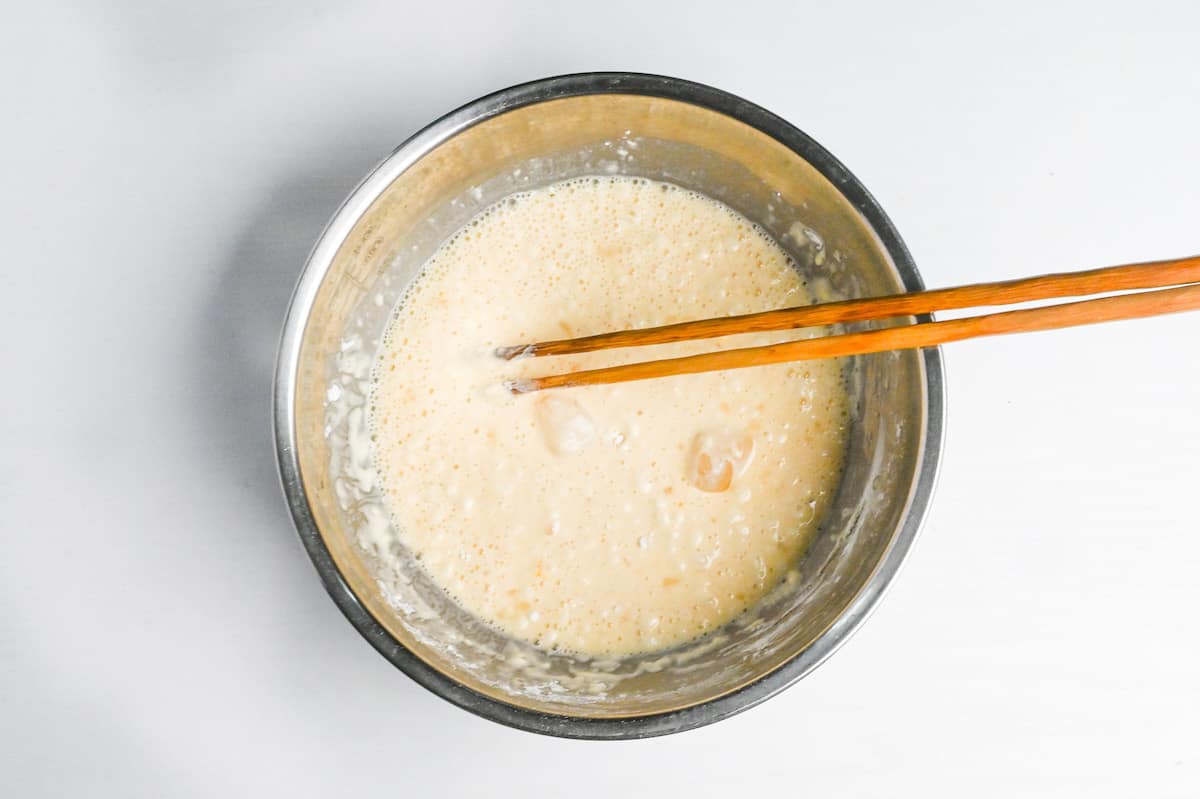
Finally, add some ice cubes to the batter to keep it chilled and ready to use.
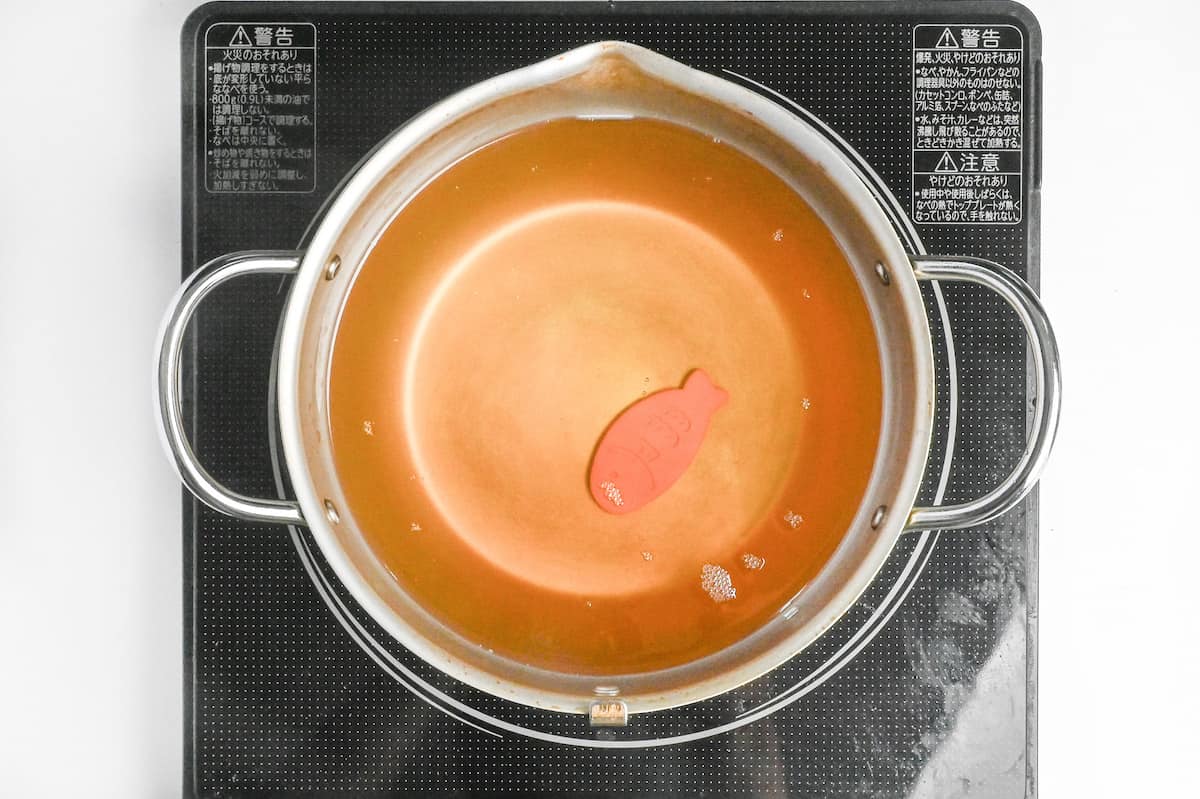
To make eggplant tempura, we need to heat our cooking oil to 175°C (347°F). Overcooking the eggplant can make the tempura soggy and greasy, so cooking it just right is important.
I recommend cooking each piece for 1 minute on each side. If you’re using eggplant slices cut with a mandoline, they only need 30 seconds on each side.
Alternatively, you can remove the eggplant from the oil when the bubbles become small and no longer crack loudly.
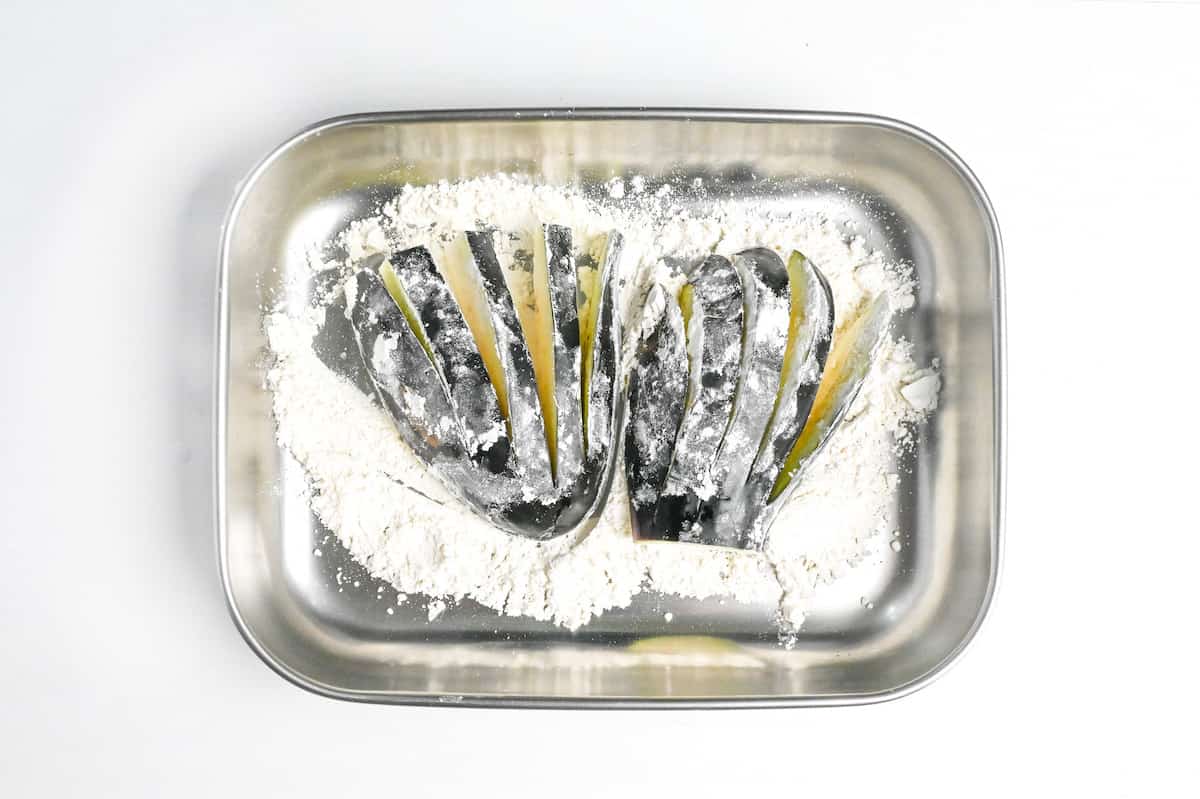
Since eggplant contains a lot of moisture, it’s best to dry the surface with kitchen paper and then dust it with flour.
This will create a barrier that keeps the moisture and grease out. It also helps the batter stick to the surface.
However, it’s important to dust off any excess flour. Otherwise, the batter will either become thick and chewy or fall off completely.
It is easy to think that more batter will make tempura crispier, but in fact, it’s the opposite.
The batter should be applied quickly and moderately and placed straight into the hot oil.
It will result in a light and crispy eggplant tempura.
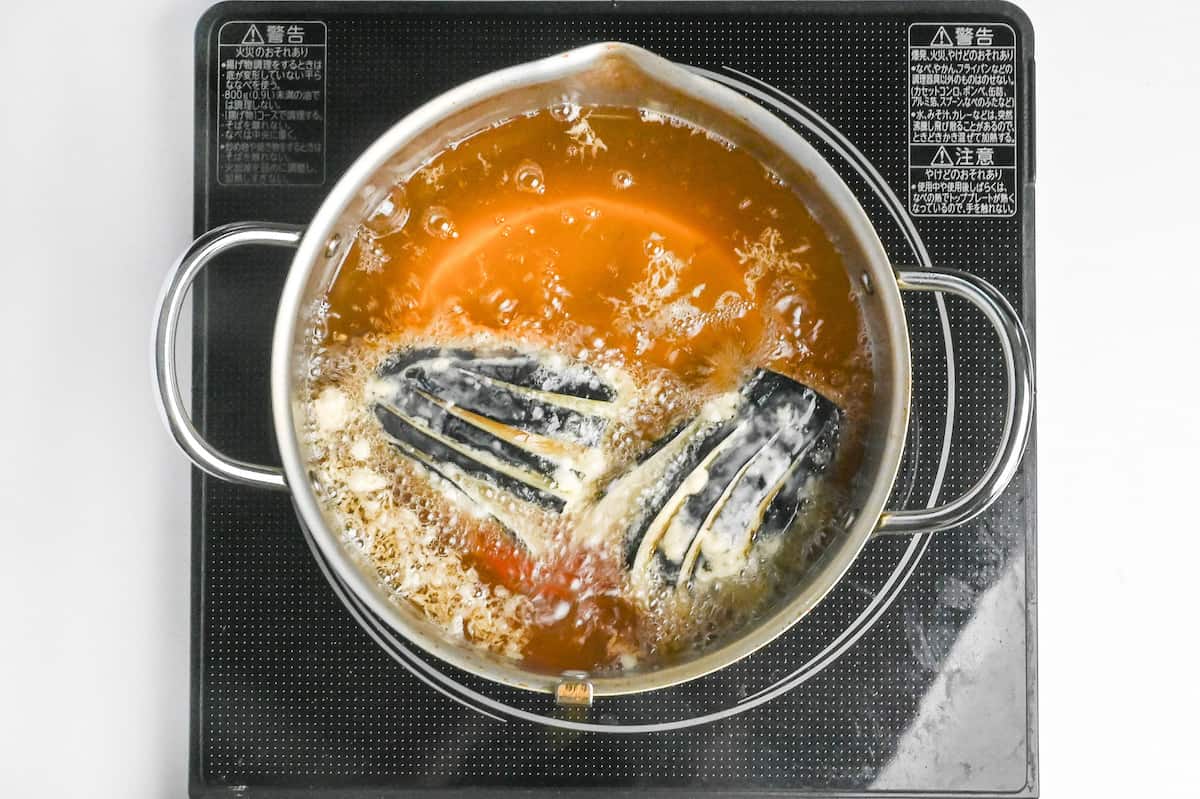
If you use suehiro/oogi cut for this recipe, it is ideal to add them to the oil skin side up first.
The surface of the skin side is extremely smooth, so the batter easily falls off. So cook the flesh side first and then turn it over.
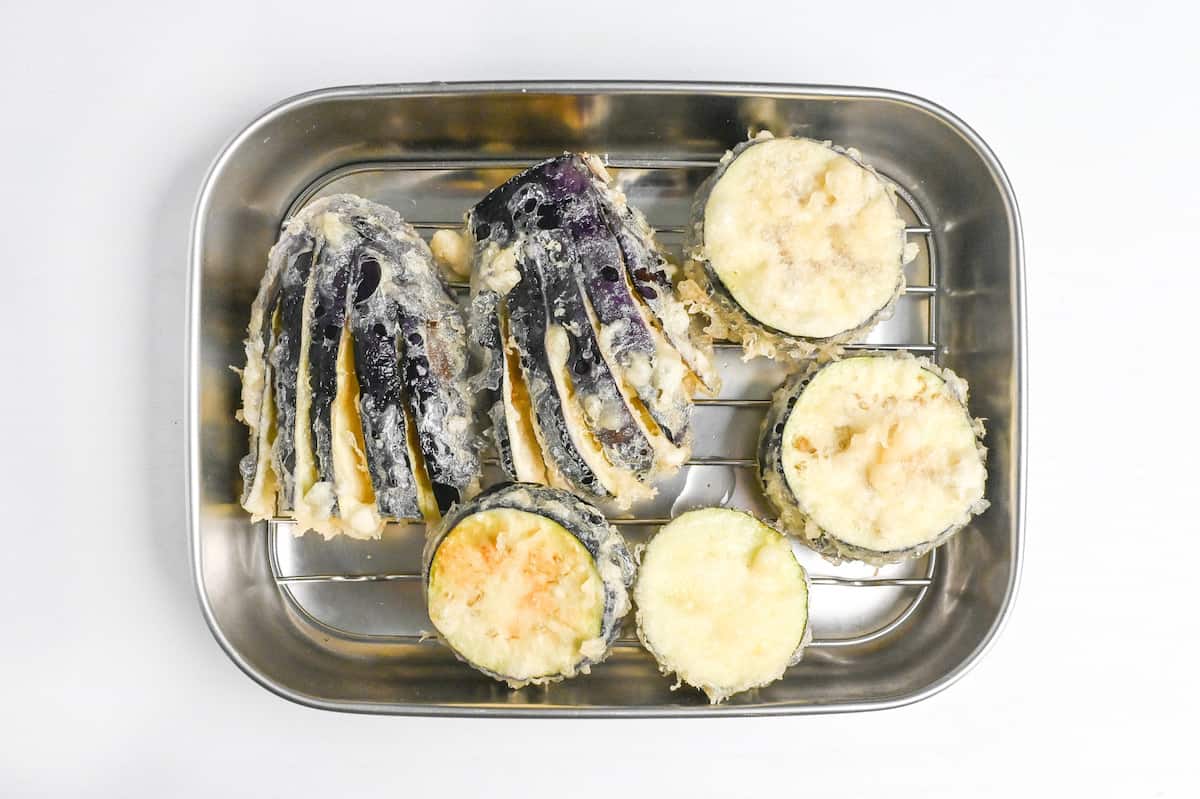
After frying, place the tempura on a wire rack to allow excess oil to drip off and achieve a golden and crispy texture.
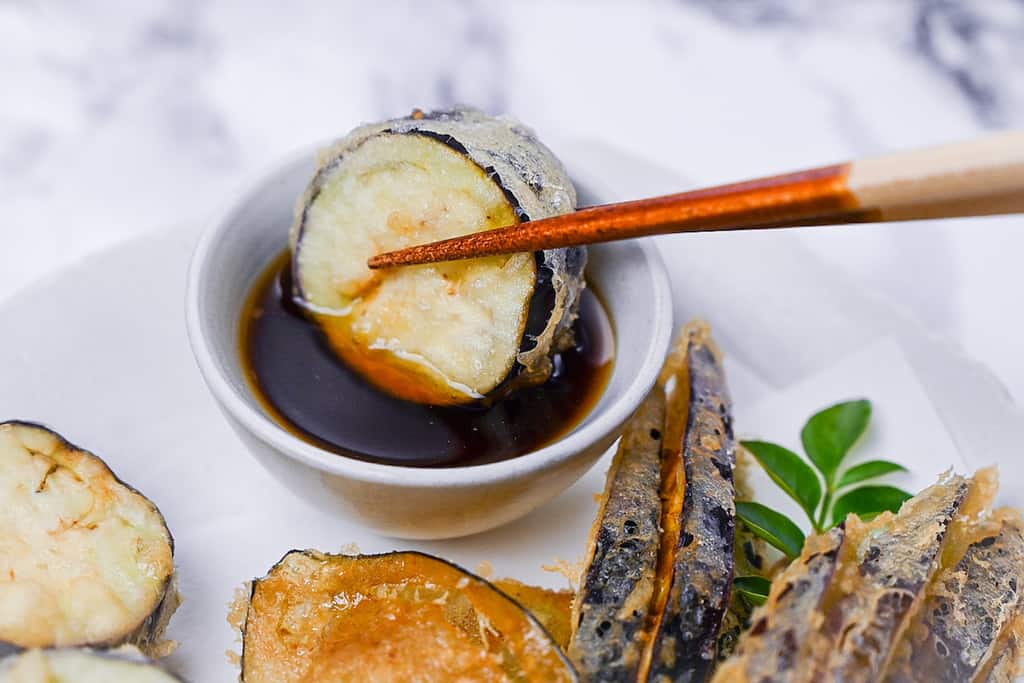
This sweet eggplant tempura pairs very well with tempura dipping sauce and kake udon/soba.
Enjoy it any way you like!
Jump to Full Recipe MeasurementsHow to Store
Tempura is quite delicate and requires proper storage to maintain its quality. It is recommended to avoid keeping it at room temperature, as this can cause it to become soggy and lose its crispiness.
For short-term storage, you can wrap tempura in plastic, store it in a container, and refrigerate it for 1-2 days.
If you want to store it longer, you should cool it in a sealed bag before freezing it. Be sure to keep the pieces from sticking together. Once frozen, it can be stored for up to a month. When you’re ready to eat, defrost and warm it up in the oven to restore its crispy texture.
However, it’s important to note that the flavor of tempura may change depending on the storage method. Therefore, eating it as fresh as possible is best for the best taste experience.
Storage summary
Room temperature – Not recommended.
Refrigerated – 1 to 2 days.
Frozen – Up to a month.
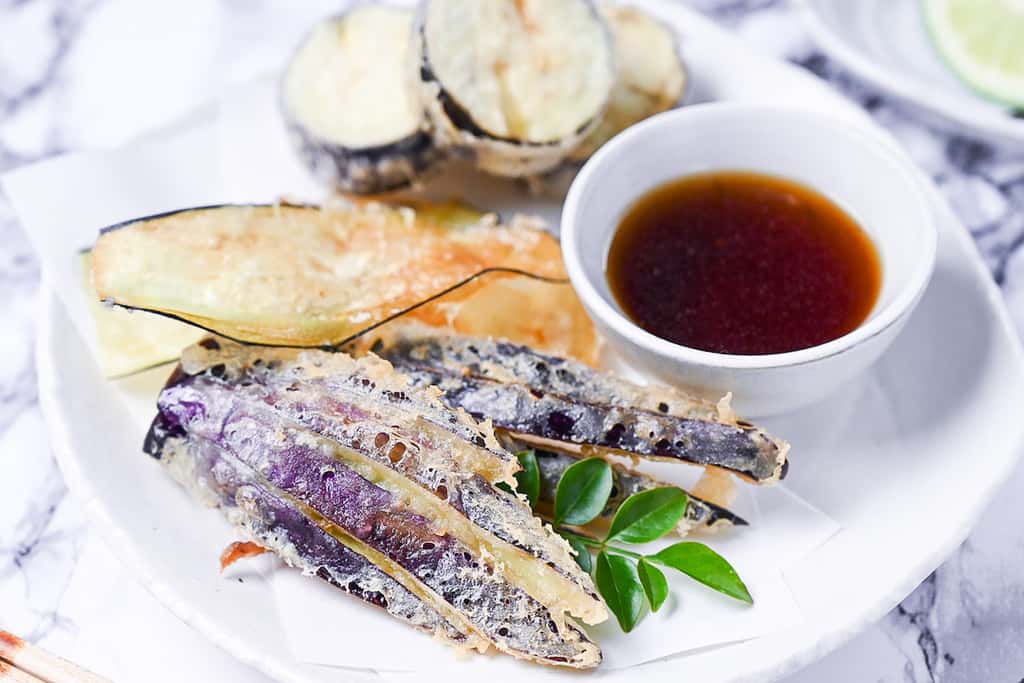
I hope you enjoy this Eggplant Tempura recipe! If you try it out, I’d really appreciate it if you could spare a moment to let me know what you thought by giving a review and star rating in the comments below. It’s also helpful to share any adjustments you made to the recipe with our other readers. Thank you!
More Tempura Recipes
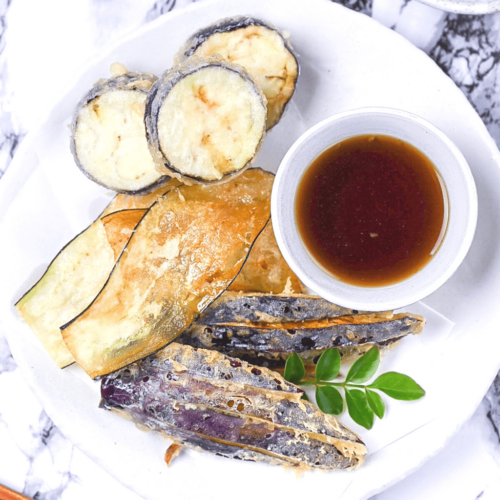
3 Ways to Make Eggplant Tempura
Equipment
- Japanese-style fryer
- Wire strainer
- Stainless steel cooking tray with wire rack
Ingredients
- 75 ml cold water
- 50 ml carbonated water
- 15 g cornstarch
- 75 g cake flour or all purpose + extra for dusting
- 250 g eggplant preferably Japanese, or Chinese/Italian eggplant
- ½ tbsp Japanese mayonnaise or half a small whisked egg
- 2 ice cubes optional
- cooking oil for frying
My recommended brands of ingredients and seasonings can be found in my Japanese pantry guide.
Can’t find certain Japanese ingredients? See my substitution guide here.
Instructions
- Measure out 75 ml cold water into a jug and place it in the fridge for 20-30 minutes. Place sparkling water in the fridge too. (Preferably an unopened bottle.)

- Sift 15 g cornstarch and 75 g cake flour into a bowl. Mix them together and place the bowl in the fridge for 20-30 minutes.

- While your tempura batter ingredients are chilling, cut 250 g eggplant either into thin slices using a mandoline slicer, thick rounds, or fans (see next step for instruction).

- Suehiro/Ogi Cut: Cut off the top of the eggplant and cut it in half lengthways. Cut each piece in half horizontally, and again vertically if the eggplant is particularly big. Cut 5mm slices on each piece while leaving 1cm at the top to hold it together. Gently press to fan out the cuts.

- If using suehiro cut or thick rounds, soak the eggplant in cold water with a sprinkle of salt for 5-10 minutes. If using thin slices, sprinkle the surface with salt.

- Once your batter ingredients have been chilling in the fridge for 30 minutes, start preheating your oil to 175 °C (347 °F).

- In a bowl (or jug), add a few tbsp of the chilled water and ½ tbsp Japanese mayonnaise. Mix until well combined to loosen up the mayo, then pour the rest of the chilled water and 50 ml carbonated water into the bowl.

- Add the flour/starch one-third at a time, gently drawing crosses through the mixture with the chopsticks to incorporate it. (Do not whisk or over-mix, it's fine for tempura batter to have lumps.)

- Add 2 ice cubes to the batter and mix to make it extra cold. (optional)

- Test your oil by adding a drop of batter, if it sizzles and floats you're ready to fry. Alternatively, check the temperature with a thermometer. Once the oil is hot, dry the eggplant pieces with kitchen paper and dust them with a thin layer of flour.

- Dip them in the batter and then carefully place them into the oil. Make sure not to overfill the pot. (Keep the batter in the fridge between batches.) For suehiro cut or thick rounds, deep fry for about 1 minute on each side. For thin slices, fry for 30 seconds on each side or until crispy.

- Once cooked, place on a wire rack to allow the excess oil to drip off.

- Serve and enjoy with tentsuyu dipping sauce or salt.
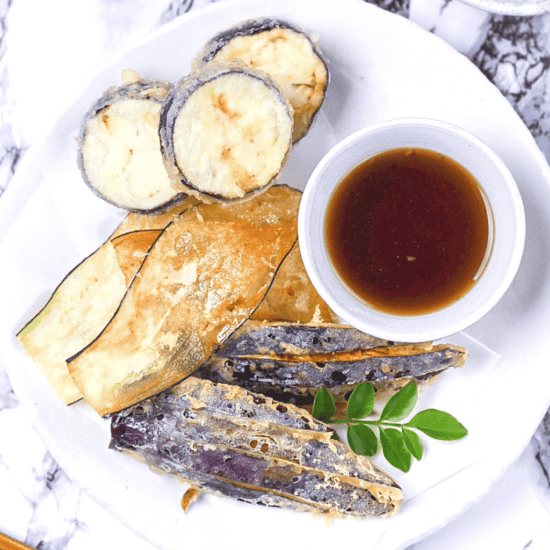


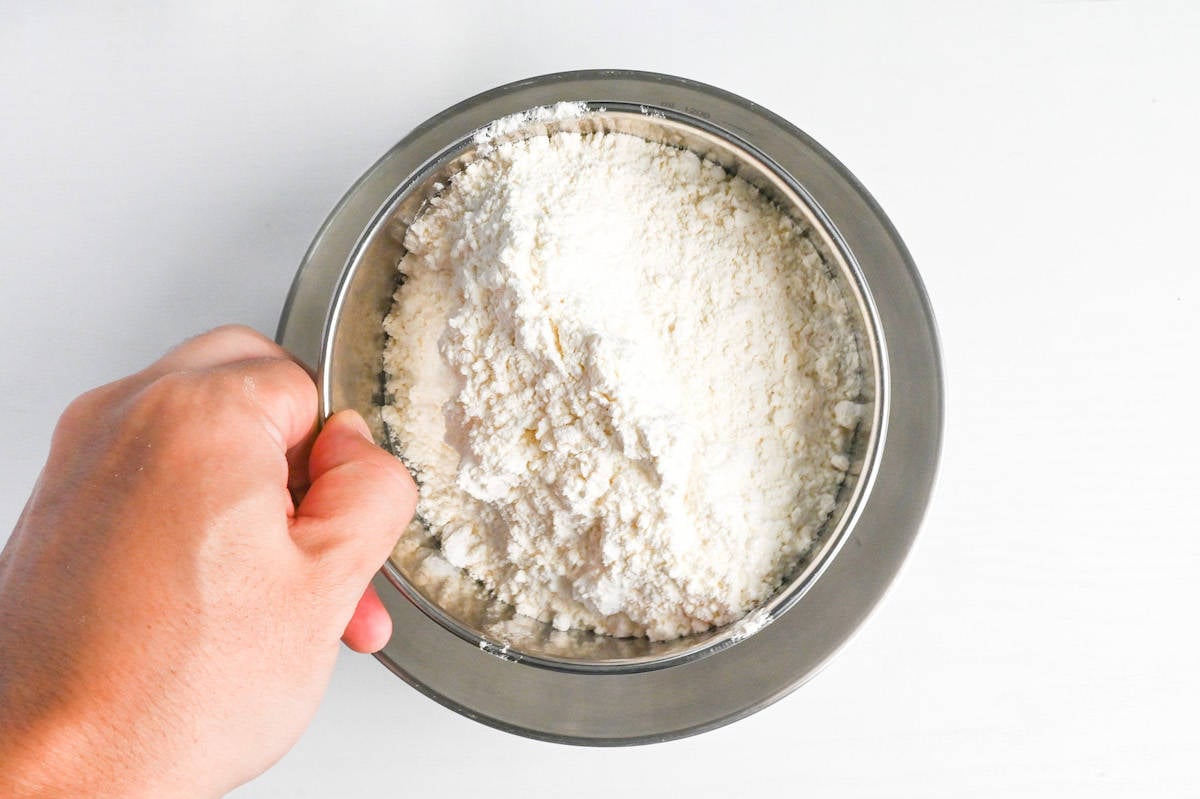
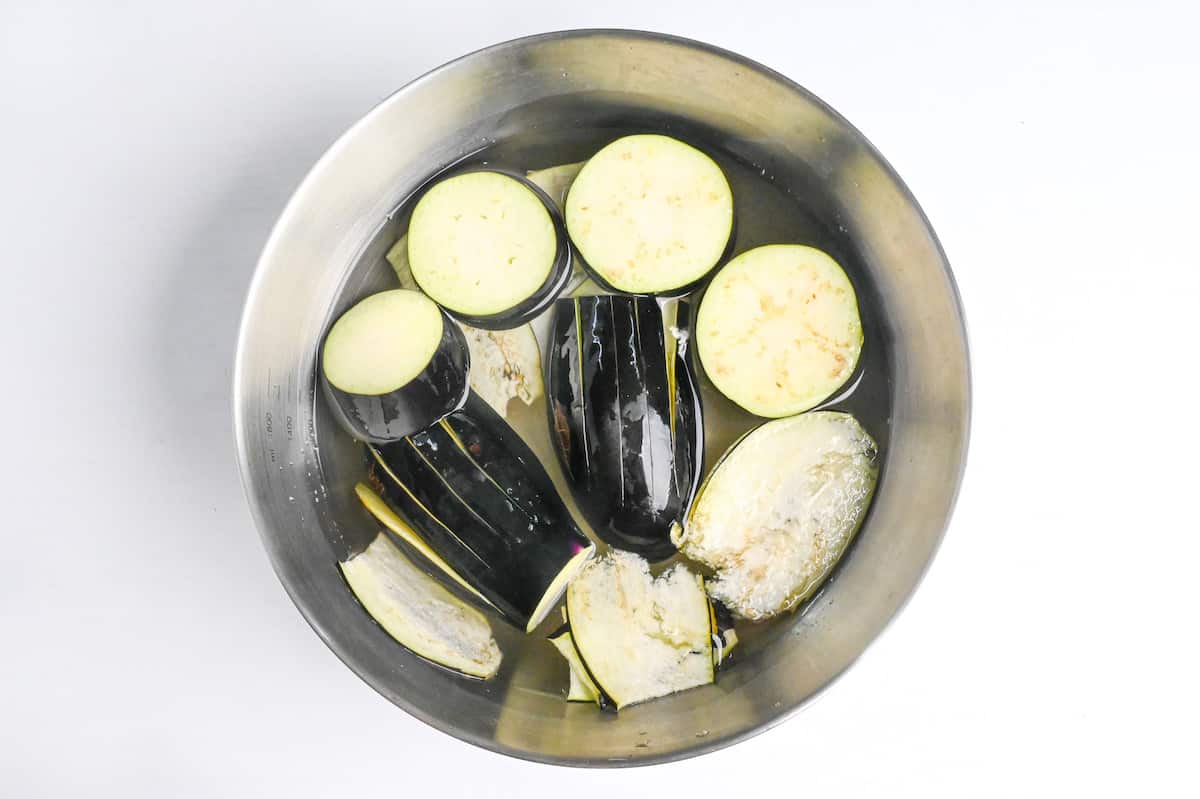
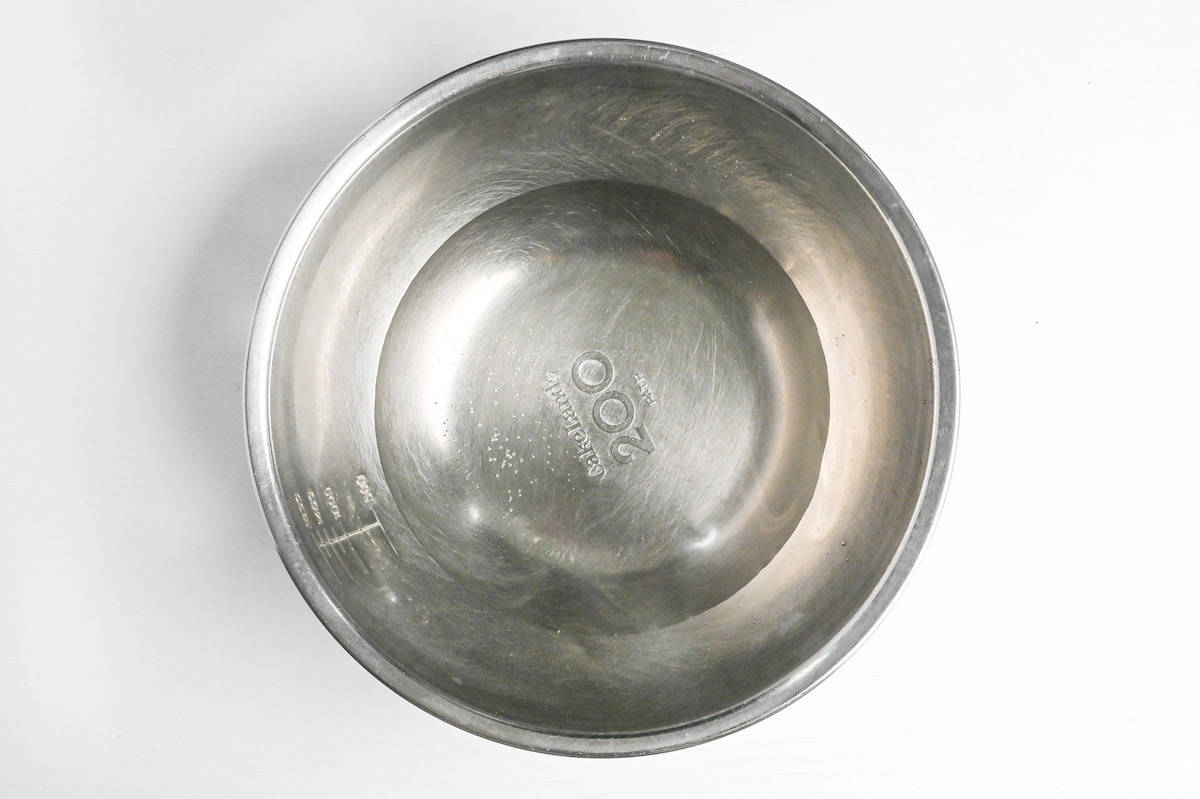
Leave a rating and a comment